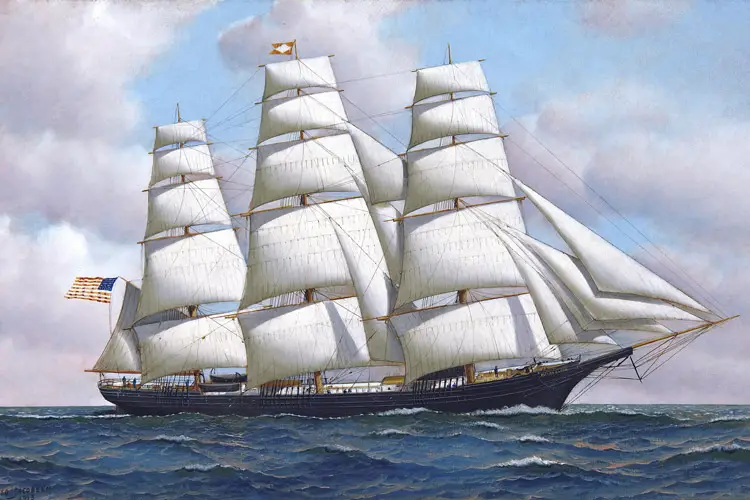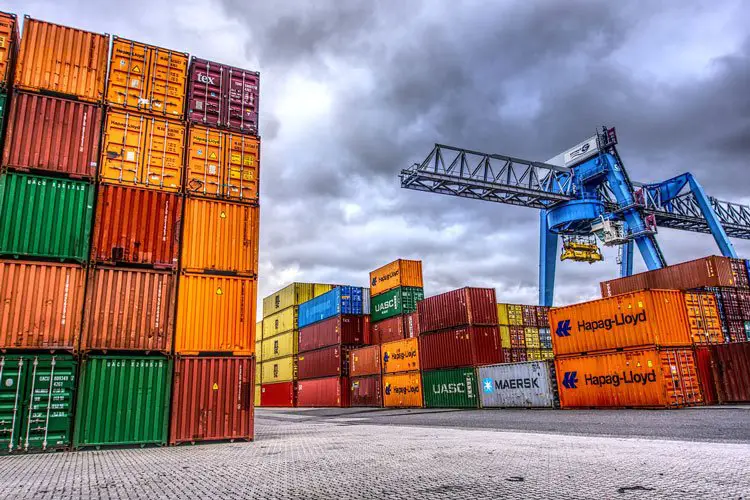The Need for Resilient Infrastructure in Port and Harbor Engineering

Ports and harbors have been crucial features of society for centuries, and modern economic demands have only emphasized their importance.
In recent years, ports have faced adversity from a pandemic, supply chain disruptions and other devastating events. These situations have underscored the need for resilient infrastructure in port and harbor engineering.
What needs to happen to improve ports and harbors for future generations? Here’s a guide for enhancing this critical maritime infrastructure.
Why Do Ports and Harbors Need Resilient Infrastructure?
Recent global events have pushed ports and harbors to their limits. Maintaining economic prosperity is essential in all corners of the globe, so here are five reasons port and harbor engineering needs resilient infrastructure in the 21st century.
Climate Change
Climate change is the most pressing issue for ports and harbors, as its effects have been more visible in the last decade. These trade points are vulnerable to climate change as sea levels rise, causing delays and compromised infrastructure. Sea levels have steadily risen since 1880, with experts projecting an average change of 8-9 inches in the last 144 years. Scientists say sea levels will continue to rise this century, emphasizing the need for resilient infrastructure.
Another side effect of climate change that harms ports and harbors is coastal erosion. This phenomenon leads to receding landmass and shallower waters, making docking and navigation more challenging for ships. Additionally, ports must allocate more time and money to ensure adequate water depth, thus stretching budgets thin in challenging economic conditions.
Natural Disasters
Climate change also brings about more powerful and more frequent natural disasters. Hurricanes and cyclones are the chief concerns for ports and harbors worldwide, as these storms sometimes carry powerful winds, flood risks and tornadoes. These natural disasters threaten ships, cargo, cranes and other essential equipment by compromising structural integrity.
Ports and harbor engineering must improve infrastructure to prepare for the harsh reality of future hurricanes. Scientists say climate change has created stronger storms due to warmer water, producing more energy in each storm system. The maritime industry should focus on ports and harbors in the Atlantic Ocean, as this body of water stands out with intense storms.
Preparing infrastructure for natural disasters should be a priority for smaller nations that rely on ports and harbors for a significant portion of their economy. Hurricanes can devastate these countries and force them to take years to recover. For instance, Hurricane Elsa caused $1 billion in damage to the Dominican Republic, Haiti, Barbados and other Caribbean nations. Storm damage limits or suspends their ability to trade valuable resources with partners.
Declining Infrastructure
The need for resilient infrastructure grows because many of the world’s ports and harbors will be unable to withstand the present and future climate issues. Some aging ports have not seen significant upgrades in decades, making them vulnerable to the weather and compromising the safety of employees and operations. Older infrastructure is also less capable of meeting demand because they’re less efficient and more susceptible to backlogs.
Declining infrastructure has become a significant issue, and international leaders have pledged funds to improve their ports. For instance, the head of Fiji’s Maritime Safety Authority says the nation plans to improve 47 ports and will start with the busiest facilities, such as Natovi and Nabouwalu.
The U.S. has also allocated resources to improvement projects, with the Department of Transportation (DOT) announcing $653 million to modernize 41 ports nationwide. With these upgrades, maritime infrastructure will be more efficient and have higher capacities to meet supply chain demands.
Emissions Concerns
While climate and weather events are significant factors, the boats and ports contribute to modern infrastructure issues. One problem ships produce is emissions, considering the carbon dioxide (CO2) and other greenhouse gases (GHGs) from vessels and the various equipment used in transportation.
Maritime emissions declined temporarily during the pandemic but increased its share as regulators began to wane. Emissions will continue to be a problem this century as economic demand increases worldwide and more ships are used to fulfill requirements. SP Global says the current trajectory of shipping demand will make the industry responsible for 15% or more of global emissions by 2050 — despite accounting for about 2%-3% currently.
Cybersecurity Threats
Physical infrastructure presents room for improvement as climate change and aging ports become liabilities. However, there are less evident threats the maritime industry must be aware of before they undermine the system and cause significant financial losses.
For example, cybersecurity has threatened ports and harbors for decades but has recently become a more significant focus due to an increased rate of cyber theft. Additionally, an increased reliance on technology emphasizes the need for solid cybersecurity infrastructure. Maritime technology has helped the shipping industry become more efficient through RADAR and GNSS systems but leaves ports susceptible to unauthorized users.
Improving cybersecurity is vital for economic stability, considering how much countries rely on ports for trade. Cybercriminals see ships and cargo as primary targets because of their financial value and they can gain leverage through ransomware and other forms of cyberattacks. Research shows cybercrime costs the global economy about $6 trillion annually, emphasizing the need for more robust protection.
Strengthening cybersecurity in ports is a complex issue, but finding a one-size-fits-all solution is challenging. Some research has demonstrated the future of cybersecurity fortification and what action companies can take. For instance, a 2023 Frontiers in Computer Science study suggests maritime professionals should take a holistic approach to cybersecurity, including cyber threat intelligence and risk management measures.
How Can Ports and Harbors Improve Their Infrastructure?
Infrastructure improvements start with effective leadership from the various parties involved. Governments and maritime organizations worldwide must take this issue seriously and provide employees with the necessary tools to take action.
Gathering Effective Leadership Teams
Infrastructure improvements start with effective leadership from the various parties involved. Governments and maritime organizations worldwide must take this issue seriously and provide employees with the tools they need to take action.
They should also rely on experts to guide infrastructure improvements because these professionals will understand the best practices for long-term sustainability. For example, experienced civil engineers understand responsible wood and water use, pollution control and other natural resource protection strategies. Organizing effective leadership teams will ensure ports and harbors receive the care and attention they need.
Implementing Renewable Energy
Reducing maritime emissions at ports and harbors should include renewable energy as one of the first tangible improvements. Most ships and vessels consume fuel, thus releasing harmful CO2 into the atmosphere. GHG emissions harm port employees by increasing the risk of cardiovascular and respiratory diseases and disastrous weather events in the long term. Additionally, these emissions threaten local wildlife and damage ecosystems.
Implementing renewable energy would turn the tide by increasing energy security. Ports and harbors have an excellent opportunity for solar and wind power because of their unique locations. Ample sunlight lets ports utilize solar power throughout the year, and offshore wind turbines can generate large amounts of electricity for port operations. Connecting facilities to renewable energy reduces reliance on the grid and contributes to decarbonizing the maritime industry.
Leveraging Modern Technology
Improving port and harbor infrastructure necessitates staying with the times and leveraging modern technologies. Smart devices and automation should be at the forefront, as these concepts use artificial intelligence (AI) and machine learning (ML) to develop solutions with minimal help from humans. These technologies will become essential for maritime businesses struggling to fill labor shortages and train new workers.
Long-term solutions for aging infrastructure require advanced technologies while dealing with constrained budgets. Ports 22 research demonstrates how maritime organizations can address weaknesses in existing seaports and harbors using a proactive and predictive risk management approach. The research suggests that updated deterioration models and geographical and sensor data technology are two ways engineers can optimize ports while maintaining safety.
Improving Maritime Infrastructure and Economic Stability
Ports and harbors are critical to the maritime industry and worldwide economies. Recent natural disasters have demonstrated the fragility of their infrastructure and how vital they are to large and small nations. The increasingly connected global economy needs improved infrastructure due to climate change and economic demand, and sustainability should be at the forefront of these projects.
Author Bio
Jack Shaw is a freelance writer and lover of the ocean. He seeks to see as much of the world as he can and shares his knowledge, research and experiences through his writing. His works can be found on Modded, Fish’n Canada, Maritime Manual, and more.





![The Unsolved Mystery Of Devil’s Sea [Dragon's Triangle] 19 The Unsolved Mystery Of Devil’s Sea [Dragon’s Triangle]](https://www.maritimemanual.com/wp-content/uploads/2019/03/devils-sea-dragons-triangle.jpg)

